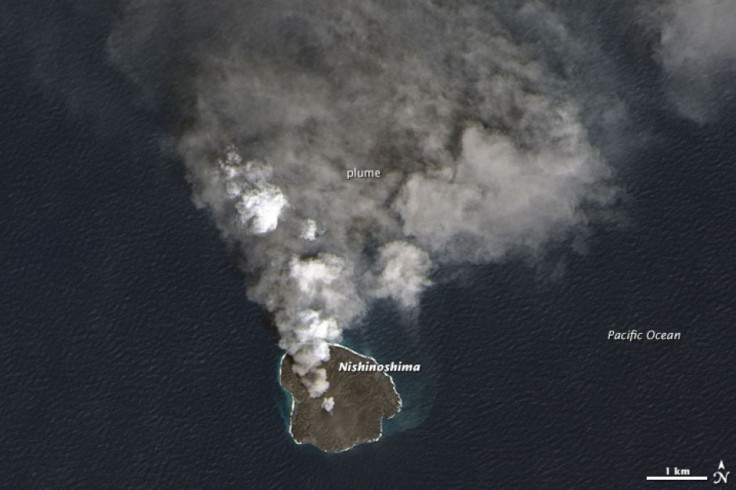Nishinoshima: Biologists train sights on new Japanese island to watch evolution of life

An island forming off the coast of Japan is offering scientists a chance to study how nature takes over a barren piece of land and impregnates it with life.
Niijima first emerged in 2013 when lava from an active underwater volcano cooled to form the patch of bare land.
It has since merged with the larger Nishinoshima island to form a new piece of land which is at present 2.46sq km wide.
Lava continues to spew on the island.
"We biologists are very much focusing on the new island because we'll be able to observe the starting point of evolutionary processes," Naoki Kachi, professor and leader of Tokyo Metropolitan University's Ogasawara Research Committee told AFP.
First to arrive will be the plants brought by ocean currents and birds, the researchers speculate. The birds could use the island as a brief stopover.
Bird waste and dropped feathers will enrich the soil and prepare it for seeds brought in by wind and ocean.
That was the process observed on Surtsey, an island that emerged in 1963, off the coast of Iceland. From a barren piece of land, the island had by 2005 around 60 vascular plants together with 75 bryophytes, 71 lichens and 24 fungi. Eighty-nine species of birds have been recorded on Surtsey.
The Unesco World Heritage spot is known globally as an example of a pristine natural laboratory.
Nishinoshima might take longer than Surtsey to teem with life as it is a longer way from mainland Japan, limiting the number of birds which may take the trip.
Japan straddles the Ring of Fire region – an area in the Pacific Ocean that is home to over 75% of the world's active and dormant volcanoes.
The region is associated with a continuous series of oceanic trenches, volcanic arcs, volcanic belts and plate movements.
Island formation
Underwater volcanoes push up rock, wet ash and magma which go to build the new islands.
The big island of Hawaii is still a volcano, and is still growing, and people actually live on it. Parts of the island are four million years old and other parts less than a day old, says University of California.
The time it would take for a volcanic island to become habitable is the time it would take for the rock to weather and form soil and for plants and animals to colonise the island.
Mauritius, a tiny island east of Madagascar is believed to have formed some nine million years ago from cooling lava spewed by undersea volcanoes. Magma that sits beneath Iceland is thought to be what created the island which continues to evolve through the same processes that created it.
© Copyright IBTimes 2025. All rights reserved.





















